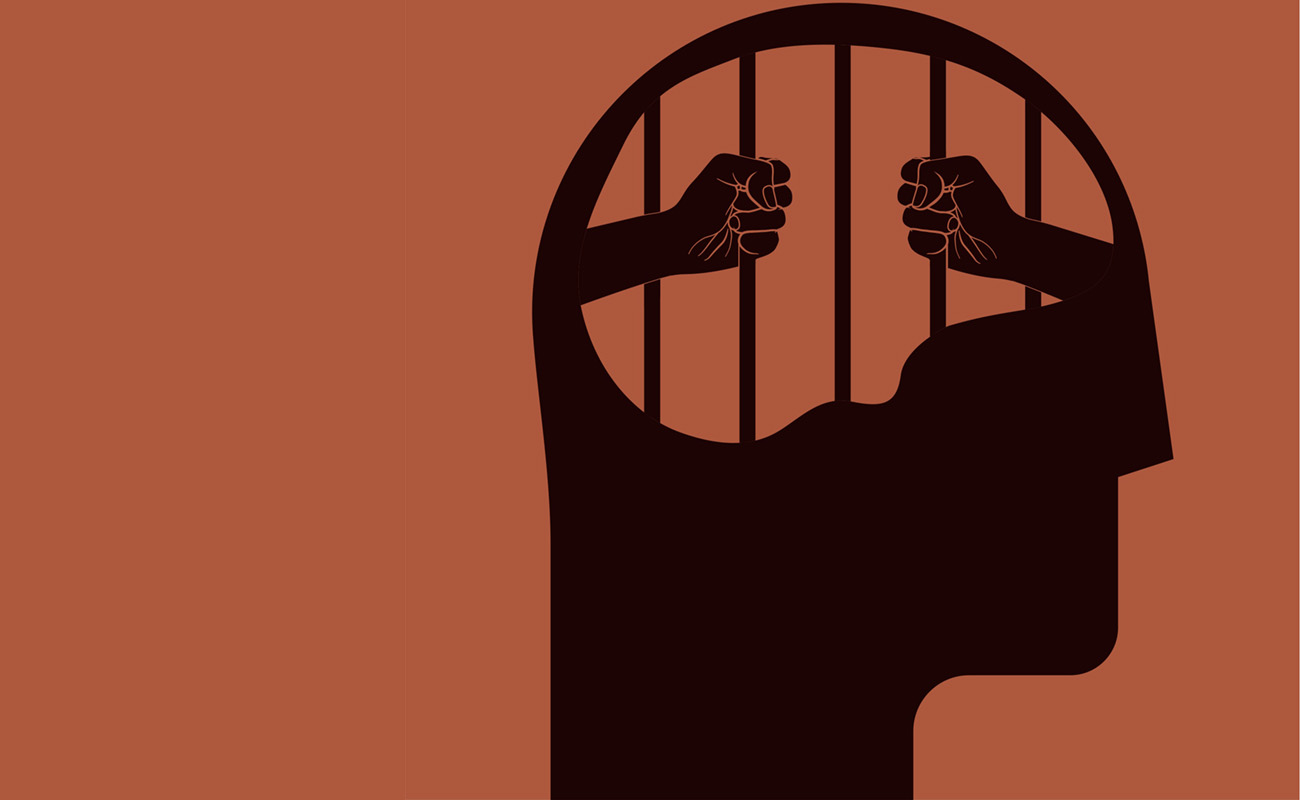Inside the criminal mind
Despite the hostile environment created by inmates and staff, Rebecca Myers did her best as a young forensic psychologist to find the humanity in the eyes of the sex offenders she treated
Within its red-bricked walls, HMP Graymoor houses some of the most feared and reviled criminals in the prison system, and on her first day working there in the mid-1990s, forensic psychologist Dr Rebecca Myers was introduced to two of its most famous: the notoriously violent Charles Bronson, whom she was told had a habit of taking staff hostage, and serial killer Robert Maudsley.
“The prison officers were testing me to see what I was made of, thinking, what’s this young slip of a lass do-gooder doing here?” says Myers some 25 years on. “So they tried to frighten me by showing me their two biggest celebrities.”
“I was trying to treat these men whose attitudes and beliefs mirrored some of the prison officers.”
As Graymoor is known as “Monster Mansion” because 80 per cent of its population is sex offenders, they didn’t need to try too hard. It was Myers’s job to rehabilitate the monsters, amid a prevailing hardline attitude from society, prison staff and even among the inmates themselves of “just string ’em up”.
The early 1990s saw the introduction of the Sex Offender Treatment Programme, underpinned by the principle that although sex offenders cannot be cured, they can acquire the tools to recognise and manage their harmful thinking and behaviour and learn to stop offending.
Which is why, aged 23 and fresh out of university, Myers comes face to face with her first treatment group of six life-sentenced sexual offenders, three of whom are classified category A – the highest risk. Four have committed murder. One is a well-known serial killer, one a child-killer and one a high-scoring psychopath. Chillingly, Myers is aware her physical profile is similar to the victims of some of the inmates under her care. Reading the horrendous details contained in their case files for the first time, she vomits.
“It was terrifying because I was so young,” Myers remembers. “To suddenly enter this world where I was literally the only woman in sight, there was a real fear that something could happen if you turn your back.”
Myers, now 49, chronicles these experiences in her memoir, Inside Job: The Life of a Prison Psychologist, which aside from offering an eye-opening insight into treating some of the UK’s most serious offenders and the personal toll it takes, also outlines the deep-rooted misogyny she faced from fellow prison staff – some of whom were more resistant to change than the inmates.
Some aspects remain eerily timely. In her first treatment group is Jeremy (not his real name), a 34-year-old former policeman, serving two life sentences after kidnapping his 44-year-old female neighbour at gunpoint, before taking her to a secluded spot and raping her, then shooting and killing her and a local dog-walker who interrupted him. In light of the Sarah Everard murder and the revelation that 2,000 serving police officers in the UK had been accused of sexual misconduct between 2017 to 2021, it feels horribly salient.
“Part of the reason why I wrote the book is because of where we are now in our attitudes in society,” says Myers. “We’ve come a long way since the 1990s and what I dealt with in prison in terms of misogyny, but it’s clear that sexual violence is still happening to women and it’s perpetrated by all sorts of people at all levels.
“Does it make it worse that Jeremy was a police officer? A victim is a victim. Does it matter who the offender is? I’m not sure. People in positions of power shouldn’t be doing that, but nor should anybody else. Despite our mammoth efforts, this isn’t going away.”
Readers may be shocked at some of the radical techniques that were employed, most notably the victim empathy role plays, where crimes would be re-enacted with the offender in the role of their victim, and Myers portraying them, wrapping bandages around their eyes or flicking water on them as proxy ejaculate. Props such as pens were used to simulate weapons or the offender’s penis. During one ghoulishly absurd role play, a heavyset bearded man is reduced to tears pretending to be his 10-year-old niece whom he abused.
“I think the victim empathy role plays felt… powerful,” says Myers, struggling to describe them. “The words are hard to find, but what stays with me is how real they felt. Even though it was a 20-stone man lying on the floor, you felt like you were in the room and that was the victim. It was overwhelming and overpowering. Looking back, I can’t believe we did that but it was always with the best intentions. Our one goal was to stop the man from doing it again.”
Working in HMP Graymoor (an alias for a prison she declines to name) strengthened Myers’s belief that people can change if they want to. Despite their violations, she does not view them as monsters.
“I was almost expecting when I went in, not that they would have two heads, but they would look and sound different, but what I found was that they were wanting to engage. You had to learn to put their appalling crimes to one side. I don’t believe people are inherently bad. I believe they do bad things and the majority of people wanted to change. They were ashamed and sorry about what they’d done, and that surprised me. I saw them very much like everybody else, crimes aside.”
Sometimes her mental force field faltered. Even now, she can’t listen to the Coronation Street theme tune without a reflex of fear kicking in, because one of the offenders in a treatment group recounted how he broke into a woman’s house, hid behind the sofa while she watched the soap, before raping her at knife-point as the end credits rolled. Worse was when she was called to help with a situation where a paranoid schizophrenic inmate had taken her female colleague hostage.
“What has driven me in my career is definitely the victims and doing my best to prevent future victims. But I spent very little time in treatment actively thinking about the victims. I couldn’t think about those children whilst in the room trying to treat these offenders.
“But when it’s you and one of your colleagues, it becomes very real and impossible to detach from that experience, which was incredibly difficult. I struggled after that. Going back into treatment, I thought: what’s the point? What they’ve done is too terrible and it rocked my beliefs.
“You become slightly complacent and start to see them as humans and the crimes themselves slide slightly into the background because what you’re doing is focusing on the treatment and the future and stopping them doing it again. When the hostage situation happened, there was no sliding into the background – it was in our faces and it took me a long time to recover.”

Prison, back in the 1990s, riven with toxic masculinity and sexism, was a tough environment to rehabilitate offenders. Myers faced catcalls and less than enlightened attitudes from some male colleagues. On her first day in the job, she noticed a page three calendar on the staffroom wall, with NSPCC stickers concealing the model’s breasts – unbelievable considering the high proportion of paedophiles in Graymoor.
“I was trying to treat these men whose attitudes and beliefs mirrored some of the prison officers. I was surrounded by it and it felt like an uphill battle.”
Given her belief in her work, Myers was “devastated” when a 2017 Ministry of Justice report found that inmates who completed the Sex Offenders Treatment Programme were slightly more likely to commit further sexual offences on release, rather than less.
“I think things changed and there was so much money coming in from the Labour government to run these groups that they got a bit out of control,” she says. “The intention was good – to stop reoffending – but what happened was the quality was diluted. It was heartbreaking.”
While Myers feels there’s a relatively better treatment backdrop these days, with less misogyny and more empathetic young prison staff, jails remain “bottom of the pile” when it comes to resources. The string ’em up attitude persists today, and dedicating funds to help rehabilitate sex offenders is hardly a vote winner.
“I tell people what I do now and they still wince,” says Myers. “But why wouldn’t we try our absolute best to do something about this whilst there’s no cure? It’s not a vote winner, but I think it could be if we could make a massive difference. But you’ve got to get the money in there in the first place and sex offenders don’t command people’s sympathy or empathy.”
Sex offenders represent roughly 18 per cent of the total prison population and one day the majority will be released. It could be argued that as taxpayers (it costs £44,600 per year to keep someone in prison), as individuals who could end up their victims, or as parents of children who may be preyed upon, it’s vital we try everything to ensure they don’t offend again.
“There needs to be more funding outside of prison as well,” says Myers. ”We can run the best treatment programmes in the world and even if we could change the culture in prisons – which is still an uphill battle – what happens when they get released?”
There’s also a paradox: we rightly expect sexual offenders to be profoundly remorseful for their crimes, but that shame may act as a barrier to rehabilitation.
“We’re not tolerant as a society and I think that makes them more dangerous. If you release a sex offender and he has nowhere to live and no job and nobody backing him and he’s lonely with no purpose and is disillusioned and has no sense of self-worth and is not in a relationship, these sorts of things are exactly the risk factors that pushed him into offending in the first place.”
Myers still works as a forensic psychologist in the prison system, although she does not wish to disclose her precise role. She remains dedicated to looking into the eyes of the monsters we find easier to shun and attempting to find the humanity within them.
Inside Job: The Life of a Prison Psychologist is published by Harper Collins

Leave a reply
Your email address will not be published.